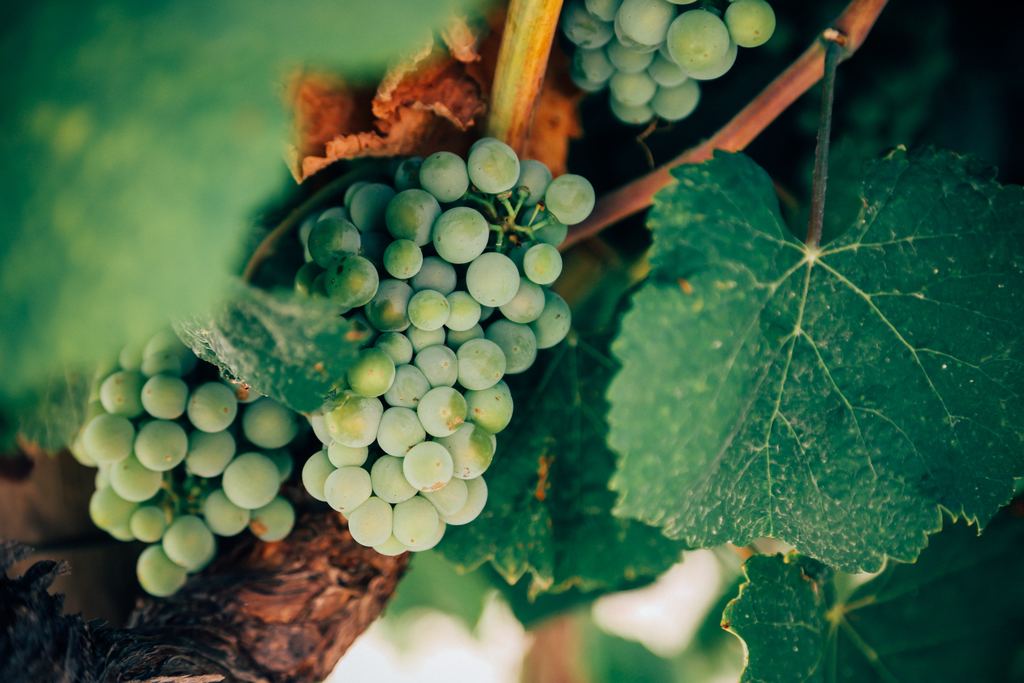
The Worlds Most Important Wine Grapes Part I - Red Wine
The world of wine is a vast, diverse place and one of the most fragmented industries around, making it particularly hard to understand and almost impossible to master. However, there are ways to look at it in quite broad strokes, and the most simple approach is to consider what wine is all about in its most basic form. Well, it's fermented grape juice, at heart. Grapes are grown until they're ripe, then crushed together and fermented using yeasts to form an alcoholic solution. From early man eating rotten grapes and having a surprisingly good time, to the modern wine industry today, wine hasn't changed in its essence, it's just that now we understand a great deal more about it. Yet at the same time, when you buy a bottle of wine in a shop, it doesn't say “Wine – Red” on the bottle, with 4-5 brands competing on price like everything else in the shop. No, labels are full of the names of places, producers, grapes and vintages. Of these pieces of information, the single most important to understanding the world of wine, is to understand the grape variety.
It's also quite important to learn how to read a wine label as well!
According to Jancis Robinson MW and Julia Harding MW in their ground-breaking book “Wine Grapes”, there are 1368 grape varieties in commercial production in the world, each with a different flavour and aroma profile, structure, advantages and disadvantages in the vineyard and so on. These are spread throughout the entire world of wine, from the newest vineyards in rural China to established estates in Germany that have been maintained since the 8th century! It sounds daunting, yet the top 35 grape varieties account for over 50% of production, most of which are referred to as 'international varieties' due to their tendency to be found the world over. We thought we'd take a hard look at the 10 most important of these varieties, and turn it into a guide of sorts to help you navigate the world of wine more easily. Whether you're a red or white wine lover, we've got you covered with the 5 most important and qualitative varieties for each, so read on and get ready to pick up some new tips for your favourite varieties. Part I is all about the worlds most famous black grape varieties!
Black grapes account for a little over 50% of the world of wine, coming at all quality levels, shapes and sizes. The Big 5 listed below can be found across the world and are considered to be the 'noble' red varieties in the world of wine. Whilst not exhaustive, you'll certainly get far by learning the ins-and-outs of these great grape varieties!

Cabernet Sauvignon
What is it? Cabernet Sauvignon is the king of red grapes, and the most planted variety in the world! It's enormously popular as it routinely creates structured, powerful and distinctive wines that usually have the ability to age for years, developing complexity along the way. It takes well to oak ageing and is relatively durable in the vineyard as well, which makes it popular both within the industry as well as by those who drink it. Whilst there are varietal expressions of Cabernet Sauvignon around the world, most are blended with a variety of different partners for different reasons, and most Cabernet Sauvignon is grown in moderate to warm climates, as it ripens relatively late in the year.
What does it taste like? Regardless of whether it's grown in a warm or cooler climate, the smell of blackcurrants is unmistakable in all Cabernet Sauvignon wines, leaning towards cassis in the warmest of climates. Better examples will also develop complexity over time, including tobacco, graphite, cedar and cigar-box aromas. Tannins are always prominent and alcohol levels range from 12.5% all the way up to 16%! The blending partners will make a big difference in the flavour profile, as will the climate, but there's a reason why Cabernet Sauvignon is so universally popular.
What should I look out for? In New World countries, most Cabernet Sauvignon is labelled on the bottle, so you have a pretty good idea of what you're buying, although do be aware that most New World regions only need to make 85% of the wine from Cabernet Sauvignon in order to label it as such, so do check for more details if you're curious! The most famous regions in the New World include Napa Valley (USA), Margaret River and Coonawarra (Australia) Stellenbosch (South Africa), Mendoza (Argentina) Hawkes Bay (New Zealand) Aconcagua and Maipu (Chile).
In the Old World, the home of Cabernet Sauvignon is Bordeaux and particularly on the left-bank. Look out for: St.Estephe, St.Julien, Pauillac, Margaux and Pessac-Leognan, which are the most famous appellations here and all of which are predominantly Cabernet Sauvignon. Vintage also makes a big difference in Bordeaux, so look out for wines from 1996, 2000, 2005, 2009, 2010, 2015 and 2016. Bear in mind that most good wines from this region are often best after 8-10 years of careful storage!
Did you know? Like most grapes, Cabernet Sauvignon has evolved over time, and with the ability to explore grape genetics nowadays, we've traced the parentage of the grape back to Sauvignon Blanc and Cabernet Franc, all of which co-exist in their homeland of Bordeaux!

Merlot
What is it? Merlot is one of the worlds great, black grapes yet its versatility and ability to express so many different styles is also something of a hindrance; it's too many things to too many different people. From cheap bulk wine to the grandeur of Chateau Petrus in Pomerol, Merlot runs the entire gamut of quality and style. Compared to its frequent blending partner, Cabernet Sauvignon, Merlot is softer and easier to drink, maturing far more quickly and with much gentler tannins. It performs well in the vineyard and can be grown across a wide variety of different climates and sites, although prefers moderate to warm areas more than anything else, as excessive rain can result in rot; one of Merlot's weaknesses.
What does it taste like? This is almost impossible to answer, as Merlot can taste so differently around the world; from silky and soft too powerful, extracted and oaky and everything inbetween. At its best it is deeply coloured, full of velvety tannins and packed full of ripe red and black fruits (particularly plums), fruitcake flavours, licorice and toasted nuts. 'Smooth' is a word often used to describe Merlot owing to its gentle structure, and in cooler climates there can distinctive herbal notes as well. It's not unfair to say that, for the majority of Merlot in the world, texture is just as important as flavour.
What should I look out for? In the New World, varietal Merlot isn't as common as Cabernet Sauvignon, and is usually to be found in a blend. Having said that, California and Chile are both countries producing excellent, 100% Merlot wines in a rich, powerful style.
In the Old World, we're mainly back in Bordeaux again but this time on the right-bank, in Saint Emilion and particularly Pomerol, whose wines are usually 100% Merlot. The vintage chart of Bordeaux above is still relevant, although the cooler years of 2004, 2008 and 2014 also offer a light, more focused version of Merlot. Also be aware that Bolgheri in Tuscany makes some superlative examples of Merlot, with price points to match!
Did you know? Merlot was confused with Carmenere for a long time in Chile and even today, many growers don't entirely know what they have in their vineyards! If you drink a Chilean Merlot that's particularly dark and herbal, or a Chilean Carmenere that's surprisingly soft and plummy, you'll know why!
Pinot Noir
What is it? If Cabernet Sauvignon is the King of red grapes, Pinot Noir must surely be the Queen. An inherently difficult grape to grow, Pinot Noir is not nearly as widely produced as either Cabernet Sauvignon or Merlot, and prices are almost always high which reflects the realities of trying to produce a healthy crop. Thin skinned and susceptible to all sorts of rots, fungi and diseases, the reason that wine-makers try so hard to produce Pinot Noir is that when it's at its best, it's hard to see past it as the most interesting grape variety on the planet. Sensual and heady, complex and hauntingly beautiful; aged Pinot Noir has been responsible for luring many an unsuspecting nose into the world of wine. Pinot Noir is almost always paler in colour than many reds, owing to the lack of colour in its already thin skins. Pinot Noir is also seen as a 'terroir wine'; that is to say a grape that accurately and consistently reflects its growing conditions in the finished product, which is often the holy grail of wine connoisseurs the world over.
What does it taste like? There's something indescribably moreish about quality Pinot Noir; it's the sort of wine that just makes you go back, again and again, for another sip. In youth Pinot Noir usually tastes simply of fruit, which is red or black depending on the climate it was grown in. However, with age Pinot Noir opens up into something quite special indeed, with aromas of game, leather, dried violets, mushrooms, warm earth and undergrowth. Whether it's a savoury or perfumed style of Pinot Noir doesn't matter – it's almost impossible to bring the glass away from your nose again! Tannins are much less obvious than in many other red wines and the usually medium-bodied nature of the wines make them natural companions for a broad variety of food.
What to look out for? Pinot Noir changes drastically as you move around the world, and small changes in climate can make for huge differences in the finished bottle of wine. If you're a fan of the ripe, heady and slightly thicker style of Pinot Noir, make sure to look out for these New World regions: Napa Valley and Sonoma Coast (USA), Central Otago (New Zealand), Patagonia (Argentina), Yarra Valley (Australia) and Casablanca (Chile).
For a lighter, more delicate style of Pinot Noir from the New world, consider: Oregon (USA), Marlborough or Martinborough (New Zealand), Tasmania (Australia), San Antonio (Chile) or Walkers Bay (South Africa).
In the Old World, the homeland of Pinot Noir is undoubtedly Burgundy, with wine-makers across the world attempting to emulate this ethereal style of wine. However, even in Burgundy there's a great deal of stylistic variation, from the powerful, muscular wines of Gevrey-Chambertin, Fixin, Morey-St-Denis and Pommard to light, fragant wines from Volnay, Chambolle-Musigny, Santenay and Beaune. Also, don't overlook German Pinot Noir (Spätburgunder) particularly from Baden where it reaches its peak. Top Burgundian vintages for Pinot Noir include: 1999, 2002, 2005, 2010 and 2015
Did you know? Pinot Noir has more clonal variation than almost any other grape variety on the planet, which is one of the reasons for its seemingly endless complexity and variations of style around the world. Most of the best vineyards in Burgundy are a mixture of many of these mutations, and the blends have become as much a part of the terroir there as the soil you walk on!

Syrah
What is it? Syrah is a black grape variety on the rise, with plantings increasingly internationally every single year. Not only is it packed full of strong, varietal character and distinctive flavours, but it can be grown in almost every climate imaginable, with light, peppery wines being made in regions as cool as Niagara Peninsula in Canada, whilst the baking hot soils of the Barossa Valley in Australia still produce a benchmark style as well. Fortunately, finding Syrah as a varietal wine isn't too difficult and whilst it is often used in blends, often in Mediterranena countries, more often than now, it's Syrah that takes centre stage. Unlike Pinot Noir, it isn't a delicate grape variety and so prices are a little more reasonable as well, whilst it's still very capable of transmitting information about its origin, climate and wine-making styles to experienced tasters. A great combination!
What does it taste like? Syrah, whether grown in a warm or cool climate, is a wonderfull savoury, sensuous wine, full of ripe black fruits, black pepper and sappy herbs. When it's produced in cooler climates, this peppery, smoked-meat character comes through strongly, often with a distinctive herbal freshness and firm tannins. In warmer regions, this becomes more opulent and the classic Australian combination is a heady bouquet of blackberry jam, crushed mint, sweet leather, black pepper and dark chocolate. Alcohol levels can run the entire spectrum and, beneficially, even relatively most examples of Syrah can often age for up to 10 years, becoming deliciously complex in the process.
What to look out for? In the New World, Syrah is still mainly known as Shiraz, where it's benchmark regions are in Australia. Warmer regions include McLarens Vale, Hunter Valley, Barossa Valley and South Australia, whilst cooler regions include Grampians, Yarra Valley, Heathcote and the Pyrenees. Do keep a look out for Hawkes Bay Syrah, as well as some smoky, dark examples from the Swartland in South Africa, San Juan in Argentina and more opulent, rich styles coming from various regions within California.
In the Old World, Syrah is very much at home in the Northern Rhone of France, where some of the most famous names in the world of wine such as Hermitage and Cote-Rotie are to be found. Croze-Hermitage from top producers like Alain Graillot and Laurent Combier are a great example of how good Syrah can be at lower price points, but the top wines of Hermitage really set the standard.
Did you know? Whilst Syrah and Shiraz are the same grape variety, the terminology used on the bottle is often quite important. Even in Australia today, it's common to see both used, with Syrah often meaning a fresher, firmer and lighter style of wine, whilst Shiraz implies a heavier, more powerful and more luscious example from the same grape. These differences in labelling and resulting style can be seen as far afield as South Africa and New Zealand!

Grenache
What is it? Grenache is one of the superstars of the 21st century, with producers falling over themselves to explore the potentially huge quality of this historically maligned variety. We know it better in the world as Grenache, but it originated from Aragon in Spain and should probably be referred to as Garnacha as a result. Famous for its rich, peppery wines and easy drinking style, Grenache can be found across the world but far prefers warm to hot climates, where it can reliably ripen. Some of the oldest vines in the world are Grenache and can be found in crouched, gnarled forms from Australia to Spain!
What does it taste like? Unlike the other grape varieties mentioned, Grenache is almost always powerful, high in alcohol and boldly flavoured. Without warm weather, Grenache doesn't ripen phenolically and the result is a flabby, stewed mess with too much alcohol and not enough flavour. The best examples are wild and appealing, with aromas of ripe, wild strawberries, cherries, garrigue, white pepper and fennel. Whilst alcohol levels are high, there's usually acidity to balance it and the texture is mouth-coating and delicious. A hedonistic, warming style of wine!
What should I look out for? Grenache has spread far and wide throughout the world of wine, although the best examples in the New World tend to hail from only a few regions. Australia is King of Grenache in the New World, and some of their vines in the Barossa Valley are amongst the oldest in the entire world! Also, look for Dry Creek Grenache from California, as well as delicious blends and varietal wines from the Swartland in South Africa.
In the Old World, Grenache really reaches its peak in two very similar regions. In Catalunya, Priorat produces probably the most remarkable, dense, chewy examples of Grenache in the entire world, some of which have justifiably reached world-wide fame and expensive prices. More classically, most wines from Chateauneuf du Pape have a strong Grenache influence, with some notable examples producing their best wines from 100% Grenache.
Did you know? Grenache is a notoriously useful grape to grow in warm areas, due to its sturdy nature and natural drought resistance. As the world gets gradually warmer and vineyards start to adapt, expect to see plantings of Grenache going up in the next 10 years or so, which is great news for fans of the grape!
For really high quality Grenache experiences, consider a wine trip to Barcelona, where Garnacha thrives along the Catalan coast! Here's our guide to help you organise your wine trip!
As you can see, using just 5 internationally recognised grape varieties, it's possible to drink almost across the entire world of wine, jumping around in both style and quality as we go. Understanding these 5, important grape varieties is a great way to set a foundation for your wine knowledge and even for experienced drinkers, the same grape variety being grown elsewhere in the world can have a quiet shocking effect! Next week we'll look at the 5 most famous white grape varieties in the world in much the same manner. Until then, happy drinking!
Once you've found the right wine and want to get it home safely, make sure you do it properly! Check out the information on our specially designed wine luggage below:








Leave a comment
This site is protected by hCaptcha and the hCaptcha Privacy Policy and Terms of Service apply.